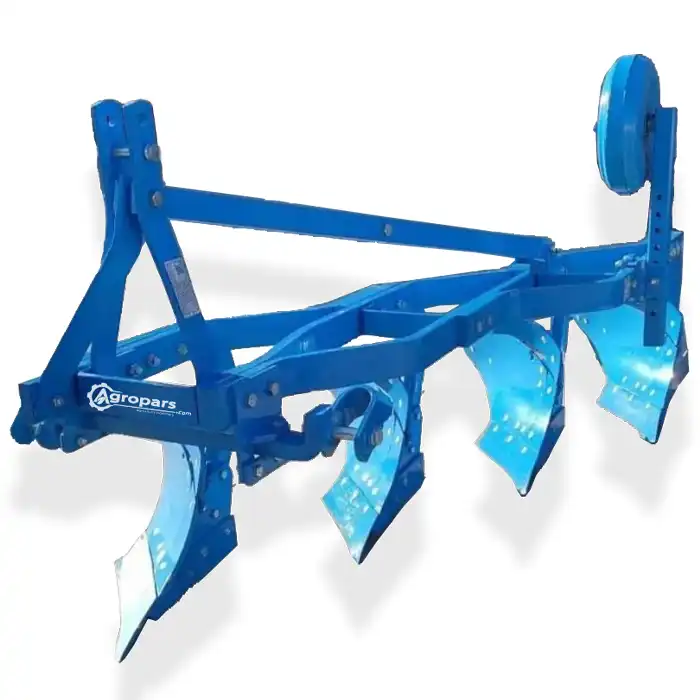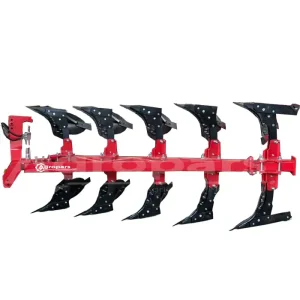Introduction:
One of the most important agricultural tools for plowing the soil and preparing it for planting is the use of a reversible plow. This tool is produced in two main types, one-sided and two-sided, each of which has its own characteristics and applications. In this article, the difference between one-sided and two-sided plows, how they work, and the advantages and disadvantages of each are examined in detail.
One-way reversible plow:
How it works: This type of plow has a single row of furrows that move the soil in one direction. In other words, the plowed soil is always turned in one direction.
Advantages:
Simple structure and more affordable than the double-sided type
Suitable for small and irregularly sized plots
High maneuverability
Disadvantages:
Creating ridges and ridges in the ground, which requires additional leveling operations
Time-consuming plowing operations due to the need to change the direction of the tractor at the end of each row
Soil compaction in the areas where the tractor moves
Double-sided turning plow:
How it works: This type of plow has two rows of furrows that work in opposite directions. In this way, the plowed soil is turned alternately to the left and right.

Advantages:
Creates a uniform surface without ridges and ridges
Reduces plowing time due to no need to change the direction of the tractor
Reduces soil compaction
Better mixing of soil and fertilizer
Disadvantages:
More complex structure and higher price than single-sided type
Requires a more powerful tractor to pull
Comparison of technical specifications:
| Characteristics | One-way plow | Two-way plow |
|---|---|---|
| Number of rows of tillers | One | Two |
| Direction of turning soil | One-way | Two-way (left and right) |
| Level of uniformity | Less | More |
| Operation time | More | Less |
| Soil compaction | More | Less |
| Price | Less | More |
| Structure complexity | Less | More |
Choosing the Right Type:
The choice between a single-sided or double-sided plow depends on various factors, including the size of the land, soil type, budget, and the purpose of plowing. For small, irregularly shaped fields and for farmers on a limited budget, a single-sided plow can be a good option. However, for large, regular-sized fields and to achieve a more uniform surface, a double-sided plow is recommended.
Conclusion:
Both types of reversible plows, single-sided and double-sided, have their own specific applications and the choice between them depends on the farmer’s needs. By considering the advantages and disadvantages of each, one can choose the most suitable option for the plowing operation.
Important points:
When choosing a plow, consider the working width, plowing depth, and power required.
To extend the life of your plow, clean and oil it regularly.
Use sharp, high-quality blades to improve plow performance.







